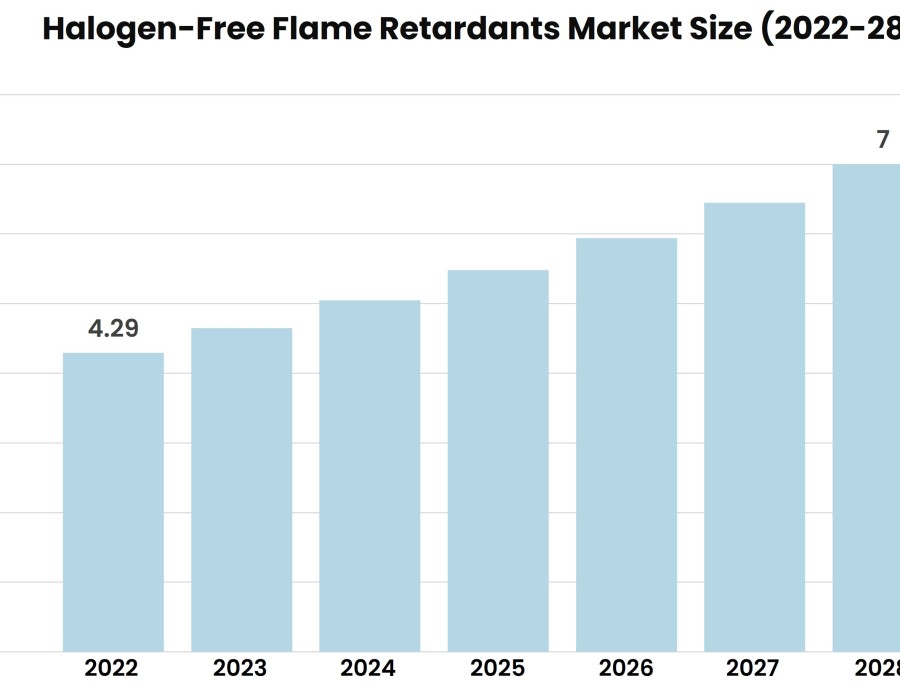According to Stratview Research, the halogen-free flame retardants market was estimated at USD 4.29 billion in 2022 and is likely to grow at a CAGR of 8.52% during 2023-2028 to reach USD 7 billion in 2028.
In the quest for safer and environmentally conscious fire protection solutions, industries are breaking away from tradition and embracing a new era of flame retardants. This article explores how halogen-free flame retardants are defying convention, reshaping industries, and setting new standards for safety and sustainability.
The Shift from Tradition:
Traditional flame retardants, often based on halogenated compounds, have long been the go-to solution for enhancing the fire resistance of various materials. However, concerns about the environmental and health impacts of these halogenated flame retardants have prompted a paradigm shift towards more sustainable alternatives. Enter halogen-free flame retardants—a departure from tradition that is revolutionizing industries.
Environmental Stewardship: The shift to halogen-free flame retardants is rooted in a commitment to environmental stewardship. Unlike their halogenated counterparts, which release harmful byproducts during combustion, halogen-free options are designed to minimize environmental impact. This emphasis on sustainability aligns with global efforts to reduce the ecological footprint of industries.
Health and Safety Considerations: Beyond environmental concerns, the health and safety implications of traditional flame retardants have spurred industries to explore alternatives. Halogen-free flame retardants address worries related to the potential release of toxic gases and persistent organic pollutants during fires, contributing to improved indoor air quality and worker safety.
Regulatory Pressures: The regulatory landscape is undergoing a transformation that favors the adoption of halogen-free flame retardants. Stringent regulations, such as the Registration, Evaluation, Authorisation, and Restriction of Chemicals (REACH) in Europe, are pushing industries to reevaluate their flame retardant choices. Compliance with evolving standards has become a driving force behind the shift away from traditional solutions.
Innovations in Chemistry: Halogen-free flame retardants represent a diverse array of chemical innovations. Phosphorus-based, nitrogen-based, and mineral-based formulations are among the novel approaches gaining traction. These innovations not only meet fire safety requirements but also cater to the specific needs and performance criteria of diverse materials and applications.
Applications Across Industries: The influence of halogen-free flame retardants extends across a spectrum of industries. Automotive, electronics, construction, textiles, and beyond—sectors that traditionally relied on halogenated solutions are now exploring the versatility of halogen-free alternatives. This broad application spectrum demonstrates the adaptability and efficacy of these flame retardants in diverse manufacturing processes.
Collaborative Initiatives: The transition to halogen-free flame retardants is not a solo endeavor. Collaborative initiatives between researchers, manufacturers, and regulatory bodies are driving advancements in flame retardant technologies. Industry-wide efforts are fostering knowledge-sharing, research funding, and the development of standardized testing methodologies for halogen-free alternatives.
Conclusion:
The era of halogen-free flame retardants represents a departure from tradition and a leap into a future where safety, sustainability, and innovation converge. Industries are navigating beyond conventional choices, driven by a collective commitment to environmental responsibility and regulatory compliance. As halogen-free solutions continue to reshape manufacturing practices and safety standards, the industries embracing this transformation are not only safeguarding the present but also building a more sustainable and resilient future






Comments